|
Embedded First, 2017, oil on wood, 20” x 16" "Frequently I feel that I am a guest in my own world," Laura writes, "there is undoubtedly a distrust of what the artificial interface might mean for our environment, for humanity, for our relationships." Through explorations of her own virtual communication, Karetzky creates what she refers to as visual storytelling. Snapshots on our i-phones often lack the depth an image can usually convey, and yet when transposed onto these oil paintings a whole new life shows up in the image, altering the perception of that particular moment in time. The image itself is inherently a thing of time, it leaves place marks of where we were, the expressions that our faces wore, the ease or uncomfortability of our own bodies, but they don't always contain the whole truth, and if the focus of the image is us, it most certainly never does, although one should never say never so assuredly. In some ways art plays with truth to better understand it, questioning how the virtual houses us, how our form might be slightly different in that place, helps to add ground where it might at times feel more like air. "I do not think that Selfies as memory are accurate," Laura says. "In many ways they represent that cleavage in communication I am exploring. And as so, I am looking at all virtual communication as a kind of staged choreography. My work is venturing to acquiesce to the synthetic and affirm our idea of what is real." AHC: What has your own personal evolution towards a life in art been like, are there a series of moments you can recall where this path, this calling, began to become the one clearly marked for you? Laura: My mind has always worked in a way that questions the visual. I notice patterns and graphic tensions in the world around me. Even as a toddler sorting Cheerios, my parents identified this and offered me immense support to pursue my interests. I am constitutionally a people-watcher and it is the formal relationship to how we configure with one another that interests me so much. In college when narrative art was discouraged and abstraction prevalent, I was, despite every attempt not to be, a story-teller—this is how I saw. Often observing the world from the outside, there was never a question of how I would manifest my preoccupation—I organize my thoughts visually—figurative art making was tandem with my way of thinking. Inception, 2017, oil on wood, 30” x 24” AHC: Could you explore and expand on some of the motivating ideas at work in your art and the process behind the making of them? How does the idea for you begin and what does its evolution look like during the stages of its development? Laura: For as long as I can remember, my work has focused on my relationship with the greater human social structure and how to map these experiences of consciousness. Moving between video, installation and painting, I become attracted to an image while I’m not immediately sure exactly why it’s pulling at me. Often it’s through the exploratory activity of making art that my objective is elucidated. My work comprises a visual diary where the procedure is to grapple and find comfort with a certain event or experience that I couldn’t process completely the first time. It’s through engaging the image that I realize the nuance of our human relationship with it. One idea leads me directly into the next. Just as my perspectives unfold and advance so does the subject matter and crux of my work. Tiny steps that move through time and space: I am never at a loss for what to make art about, form and conversation is inherently expanding; time is my biggest challenge. Embedded FaceOnFace, 16” x 12”, oil on wood, 2017 AHC: Do you see technology as an impairment of our memory in any way, or more as an improvement, or a bit of both? Your oil paintings have a way of enlivening/enriching the digital screen in a way that our phones themselves lack the ability to do, do you see your paintings as a way to add or layer soul onto the digital remnant? Laura: Through my inevitable involvement with the computer interface as a means of communication, I became fascinated by the shift in point of view, where we are surreptitiously third party voyeurs to our own experience. Frequently I feel that I am a guest in my own world in a sense, so this perspective is acutely interesting to me. There is undoubtedly a distrust of what the artificial interface might mean for our environment, for humanity, for our relationships. If a pixilated message is always presented with the self-awareness of the constructor, can it never truly be clean handed? I do not think that Selfies as memory are accurate. In many ways they represent that cleavage in communication I am exploring. And as so, I am looking at all virtual communication as a kind of staged choreography. My work is venturing to acquiesce to the synthetic and affirm our idea of what is real. Starting with genuine actual conversations on my Smartphone, and capturing a single frozen frame: the moving image is made still and then re-imbued with movement again as brush strokes on wood reveal a licit passing of time. For the last two years I have been using an indirect painting technique and a very limited palette. Structuring a subtle shift in tone that separates each day’s work, the layers remain obvious. For me, it is an attempt at communion; to explore the tensions in how we strive to stay connected over all kinds of distances. Yet it is the emotions embedded in an image that are illuminating, especially when found colliding with other tangential or unrelated events on a screen. This seemingly arbitrary intersection is what I currently find especially worth exploring. Nectar, 2013, oil on linen, 50″ x 60″ AHC: Who are some of your artistic influences? Is there anyone outside of the art world who has had a huge impact on you and your work or who just generally inspire you on some level, writers, filmmakers, comedians, musicians etc? Laura: I think of myself as a visual short story author. James Salter’s work, the imagery in his writing, the calculated editing and near remoteness of his approach appeal to me immensely. It is the scrutiny in another’s endeavor that resonates with me the most—and a sense of what’s withheld, what’s trying to be found. Wes Anderson’s movies have that, the Coen Brothers, Mamet, Beckett, Ibsen. I love the query in de Chirico’s early paintings, the confident graphic and divisive quality of light, set against the emotional uncertainty of what you are unable to see. The environment is sturdy and evasive at the same time. It makes us question how we navigate space. I love draftsmanship—of course this is exciting. But the search for human connection and exploration of its incongruities resonates greatly for me. There is DaVinci, Morandi, Goya, Balthus, Hopper, Andrew Wyeth, there are so many. I listen to music when I work, almost always music that tells stories—though not always through lyrics. I’ve been listening to a lot of Keith Jarrett these days. I love the way he keeps you suspended with each phrase. You don’t always know where he’s going and where he’s going to end up, but he is able to get you to trust him enough to want to take that journey with him. I like anything that asks us to reconsider our expectations. I think trust is essential to the inquiry, otherwise the viewer can’t open up enough to be taken in. This is the essence of the quest. Embedded Rainbow, 2016, oil on wood, 30″ x 24″ AHC: What do you consider, personally, to be the most sacred and enduring aspects of art? How does it enrich our world and our cultural memory? How has it enriched or altered your own life? In your opinion, what does art, at its finest moments, bring into the world that would otherwise leave us more impoverished without it? Laura: At its most sacred, art should be a mirror. The most enduring thing that art can do is to evoke open-ended questions and guide us to see from multiple perspectives. Ideally it can help us see ourselves, and see ourselves differently. Social Media invites us to accept cultural memory as narrative flux as we digest information that is constantly evolving and diverging. It may be now commonly understood that recall is simply an illusion that can be manipulated and edited outside of time and experience. If the narrative picture of the past is always in flux then our image and identity of ourselves is unstable, also in flux. I have a friend who recently reverted to calling me on the phone. I would send a text; she would pick up the phone. Radical. At first this was nearly unnerving, as I felt almost apologetic for being available. The conventional phone call, where a candid conversation can exist unpublished and untraceable, has become shockingly progressive and new. Embedded Portal, 2017, oil on wood, 24” x 30” AHC: What is the first work of art you encountered that took your breath away, that lit a fire in you? Laura: I can’t recall a time before I was breathless by art. Art has always been present in my life, in our home, in my world. There is a wall mural by José Clemente Orozco in the town where I grew up that challenges culture, education, civic structure and government. It’s a celebrated work that questions the core fundamentals of the very people who commissioned the piece. I always knew that art was probing, and that that was responsible necessity from both sides. My family did a good job of presenting these possibilities to me partly because it was so important in their lives. We socialized and built vacations around visiting museums and working in foreign cities and cultures—this is what made days exciting. PoorConnection, 2017, oil on wood, 14” x 11” AHC: Do you have any words of advice or encouragement for young artists and other creatives who are experiencing self-doubt in their art, frustration or blocks? What are the types of things that have helped you to move past moments where you may have become stuck creatively? Laura: One thing I have learned that is so comforting to me, is that if I hit a snare or feel I have ruined a painting—that if I keep going, with perseverance I can work through to the other side. With diligence and focus there is always another side. Work history means a lot in a piece. Sometimes it’s the effort of the struggle that can be felt, even if not seen, and this is powerful. I have also learned that if I become overly enamored with a passage, I usually become paralyzed for the other passages, and the work fails. Being able to trust the entire process, seeing the large and the minute simultaneously, this makes all the difference. Understanding how to embrace the discomfort of grappling through a rough spot—knowing that no mark can be sacred or isolated—That confidence is immensely freeing. Embedded HouseBed, 2017, oil on wood, 24” x 18” Embedded MeandM, 2017, oil on wood, 20” x 16” AHC: Do you have any upcoming exhibits or new projects you'd like to tell people about? Laura: I just closed a show, Embedded at Lora Schlesinger in Los Angeles. This exhibition was a culmination of two years exploration of the recursive double-portrait in our FaceTime experiences. One image installed in another. One life anchored in another. I was looking at how we search for alliance both formally and emotionally. I am now starting to think about the inevitable space between that association. How fraught communication is, and the rift that remains no matter how vigilantly we attempt to nestle ourselves in. What is presented versus what is perceived is only part of what I am talking about. It’s the intent of the image as it conflicts with another, and that is what I want to follow next. Embedded Laundress, 2016, oil on linen, 40″ x 40″
For more visit www.laurakaretzky.com/ All images © Laura Karetzky
0 Comments
Leave a Reply. |
AuthorWrite something about yourself. No need to be fancy, just an overview. Archives
April 2024
Categories |
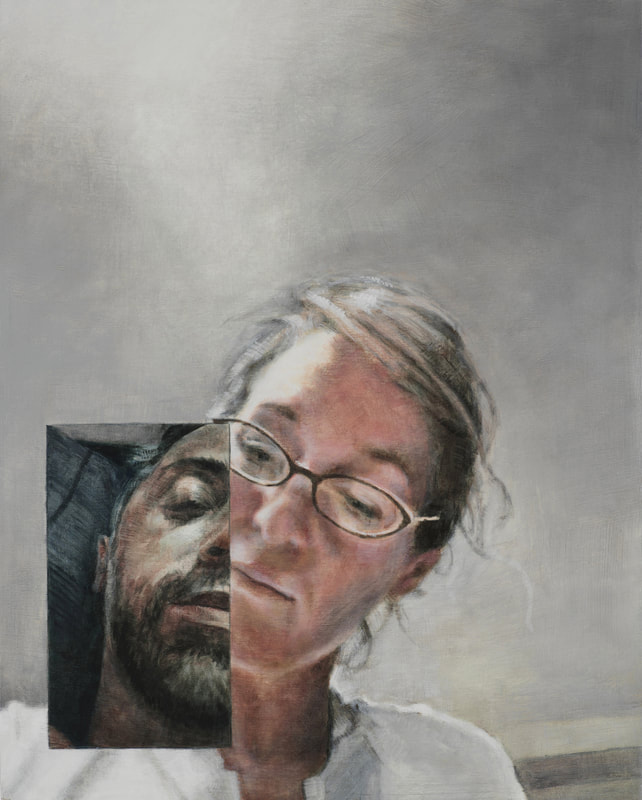
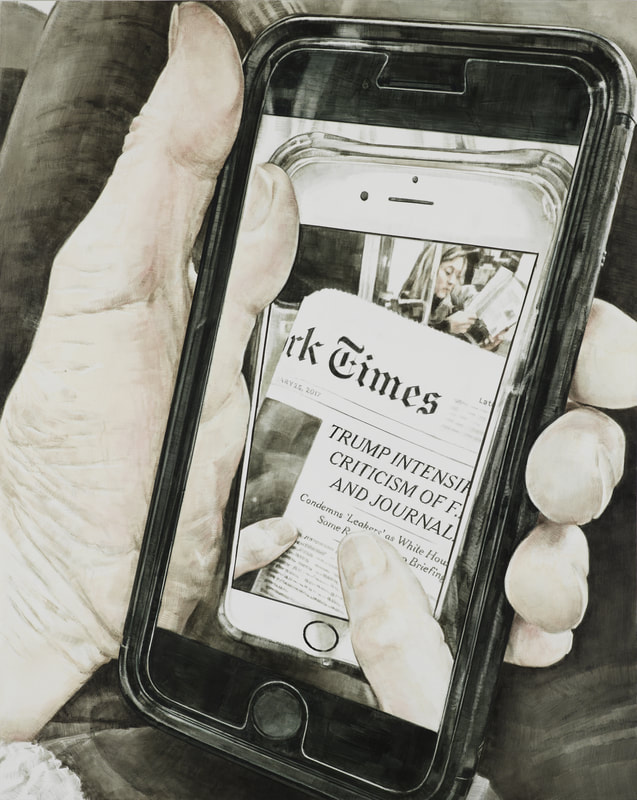
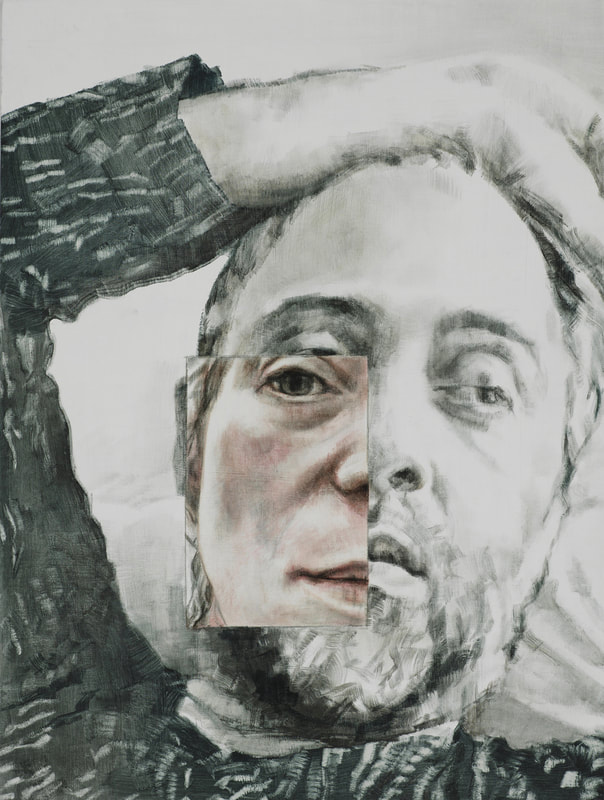
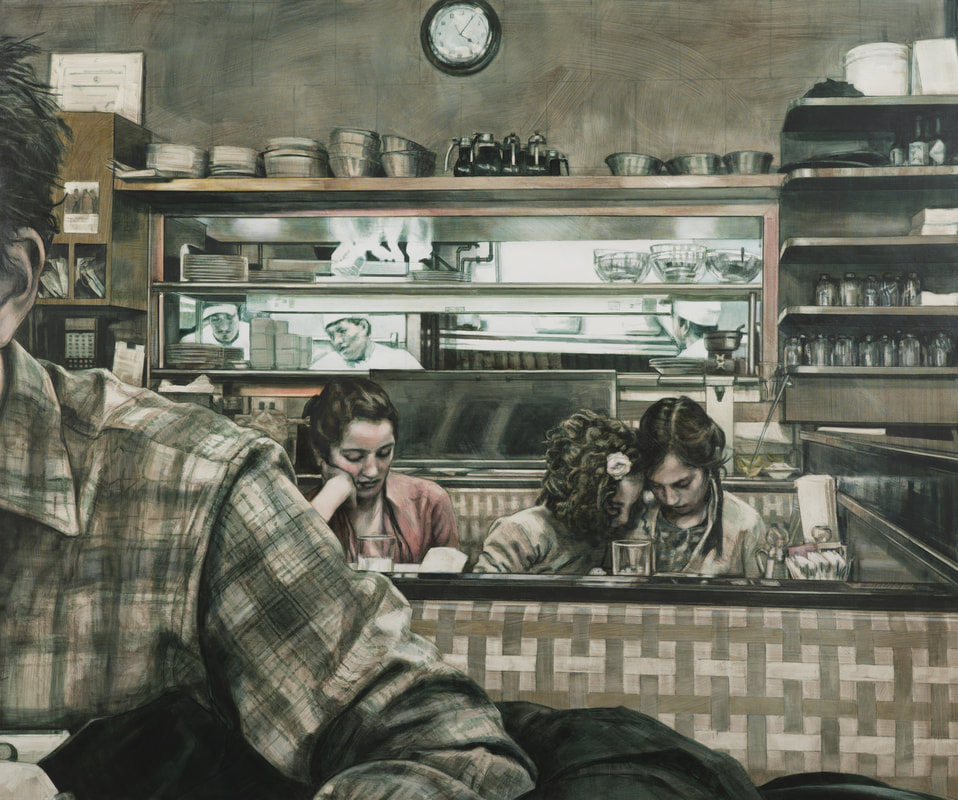
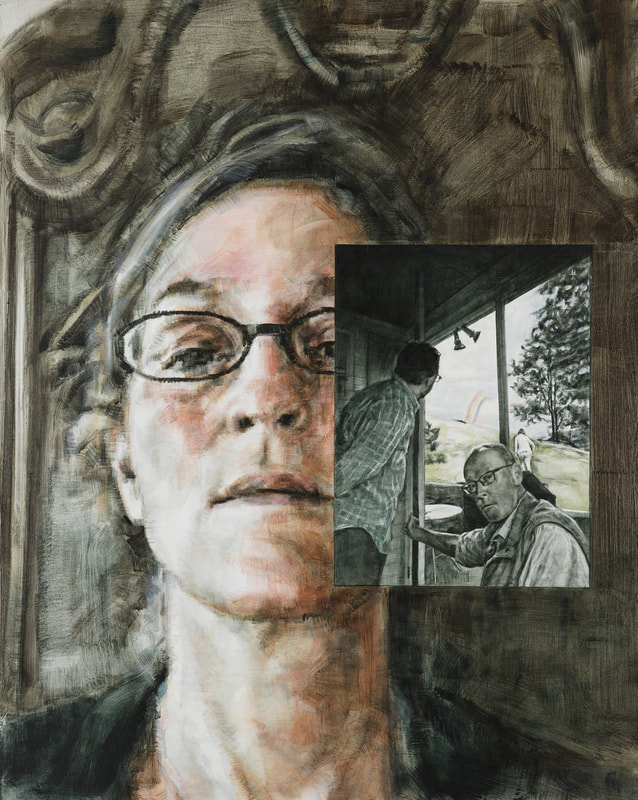
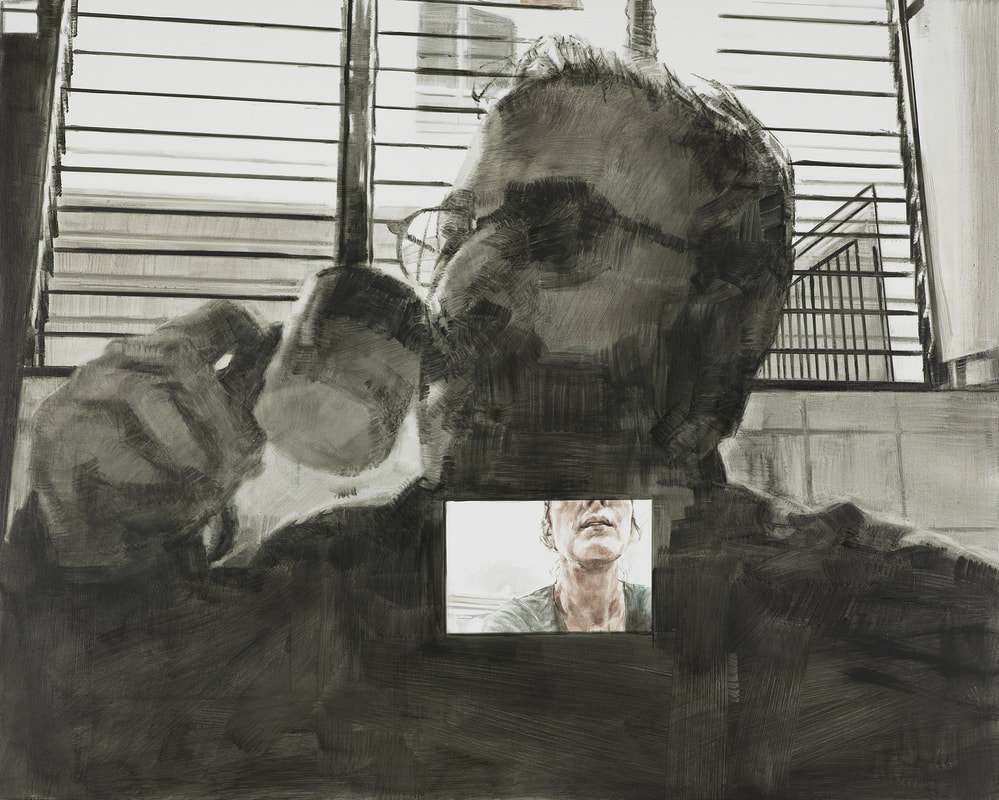
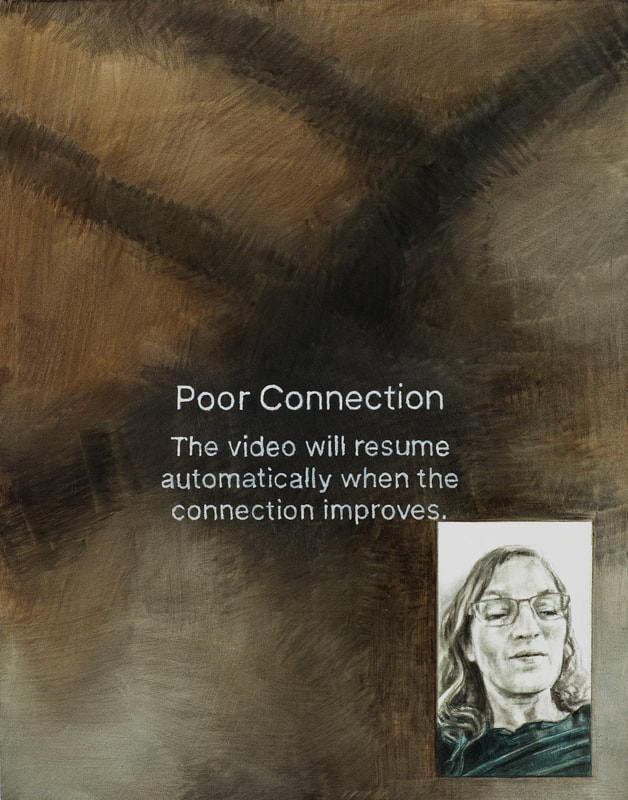
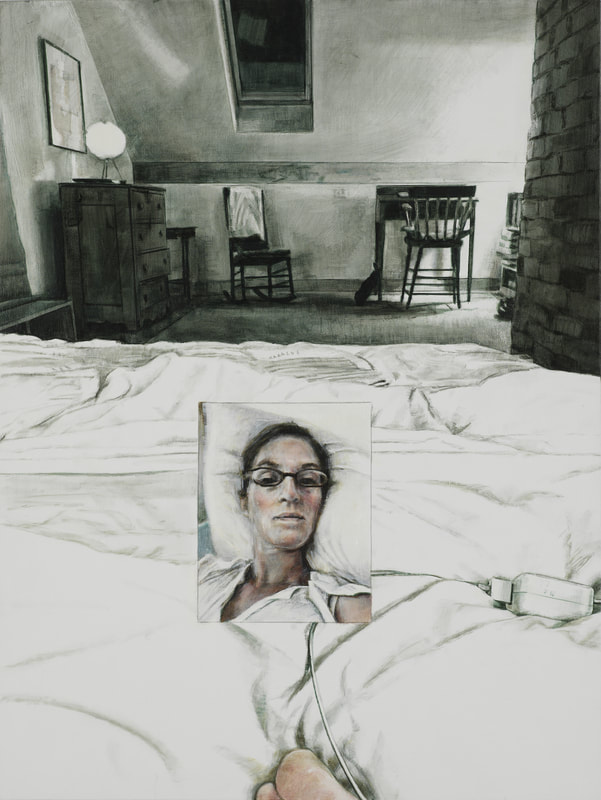
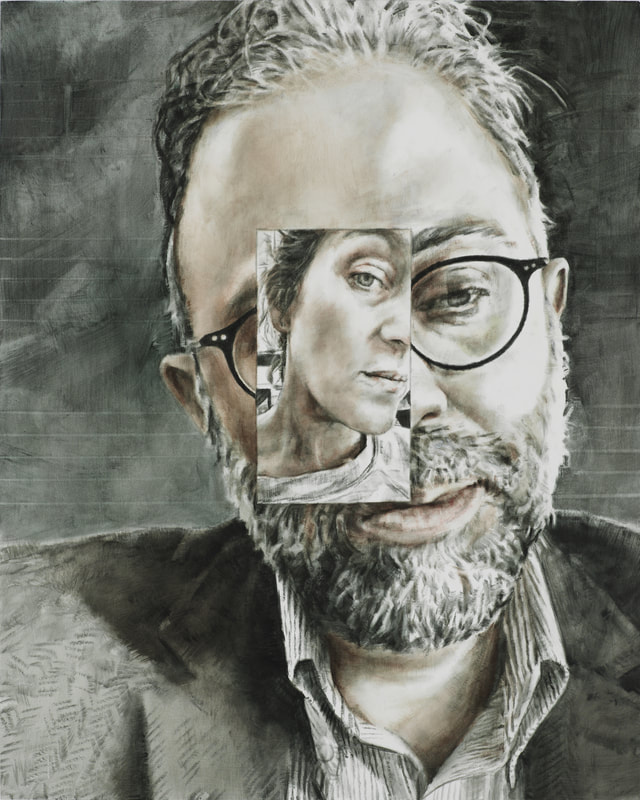
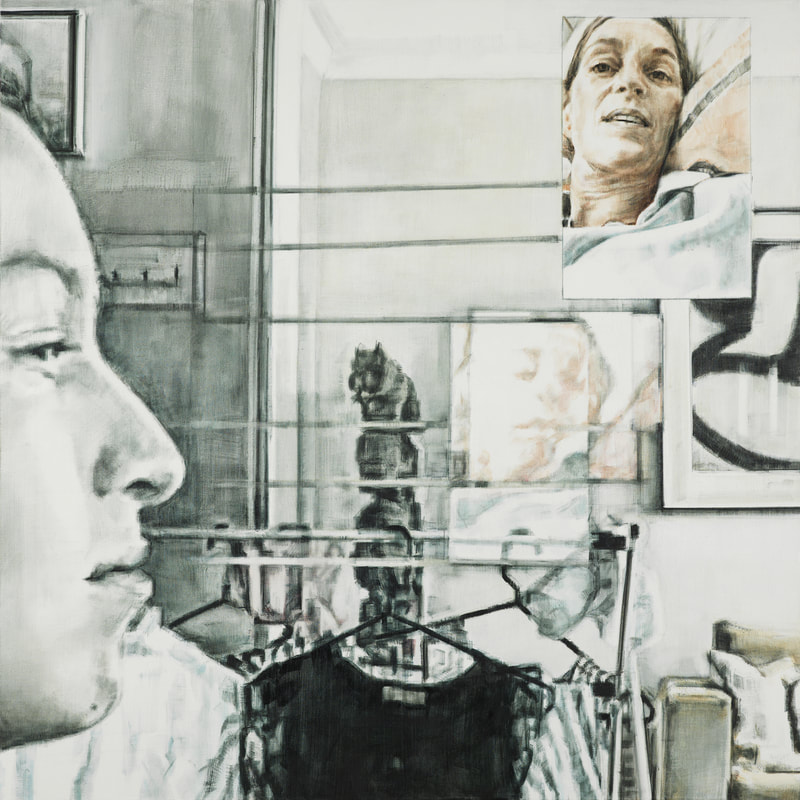
 RSS Feed
RSS Feed
